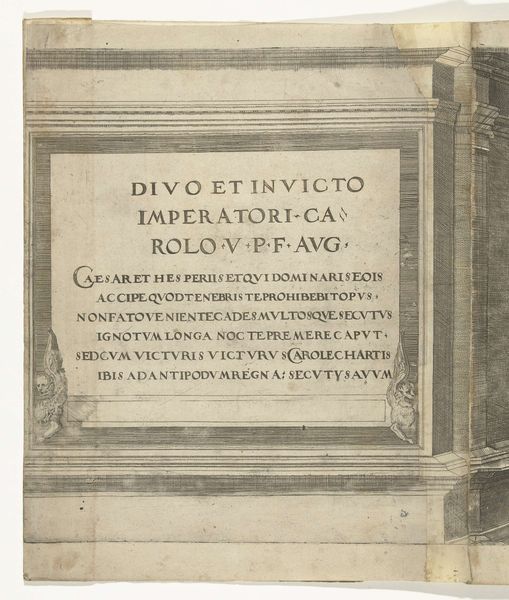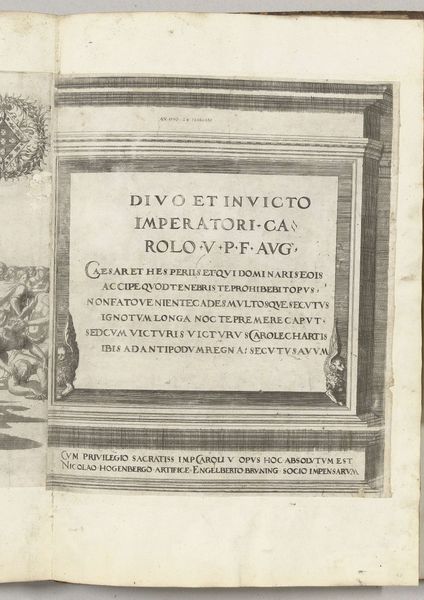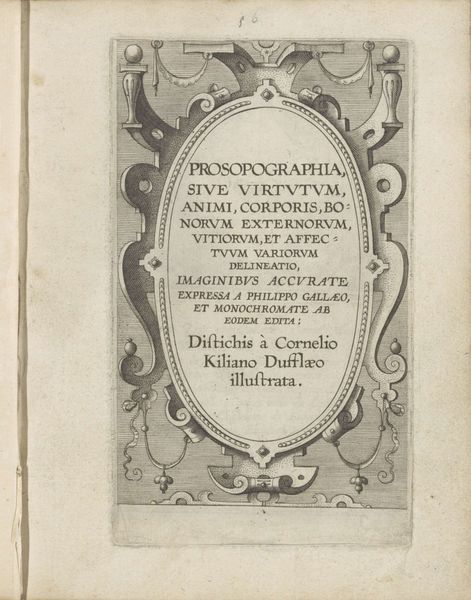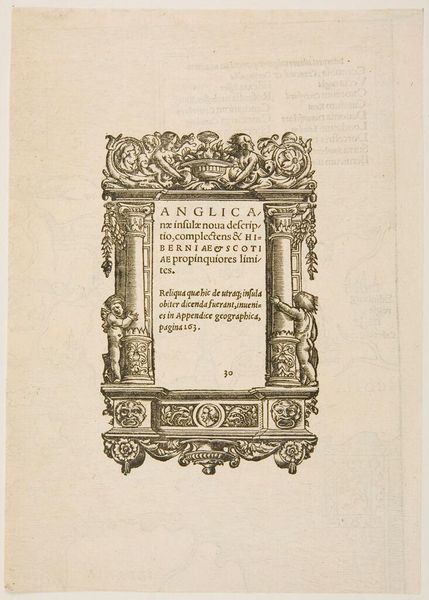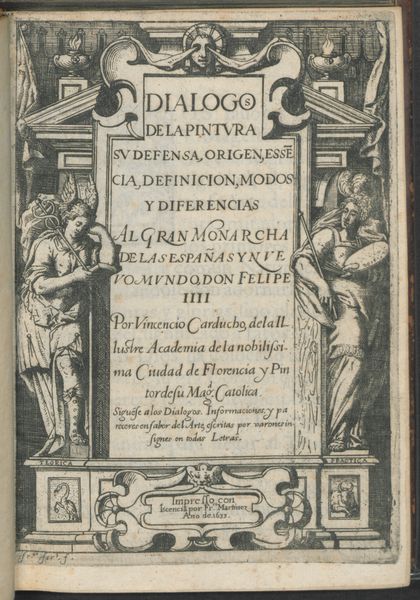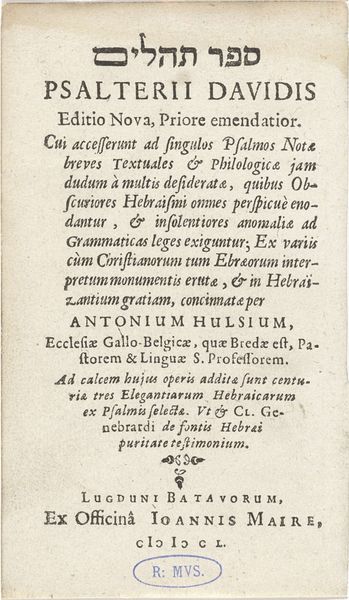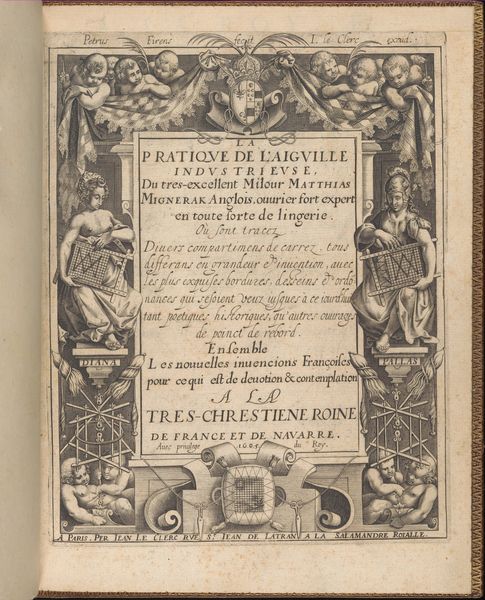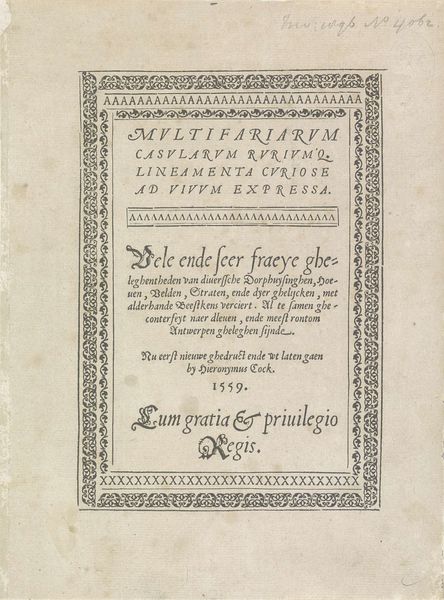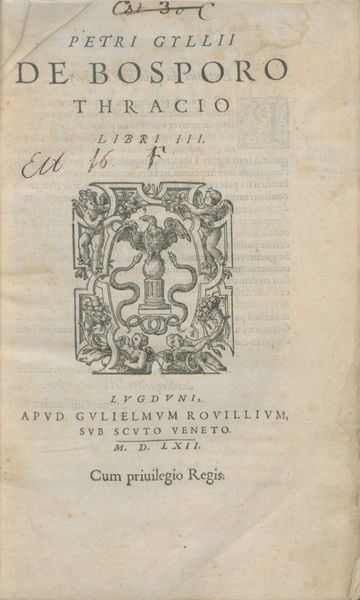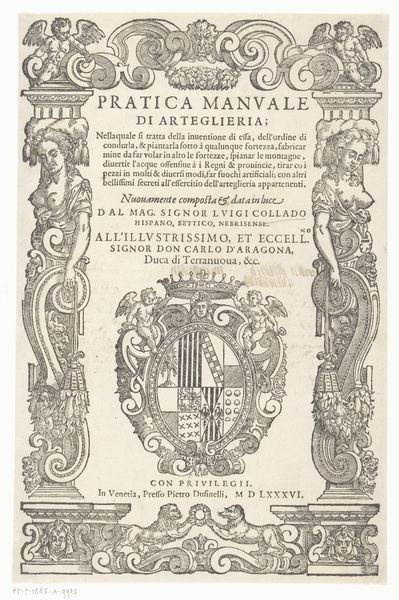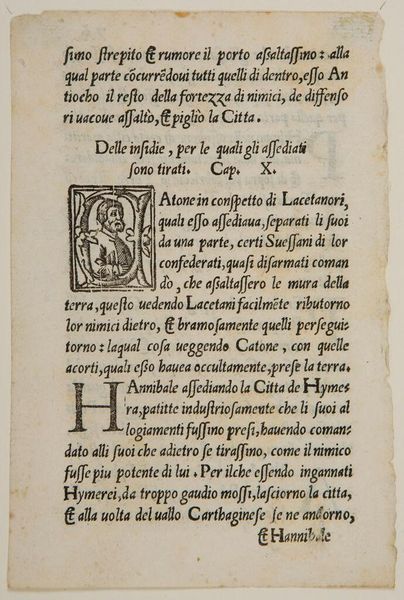
Titelprent voor de prentserie Optocht van Karel V met de paus te Bologna na zijn kroning to keizer, 1530, plaat A Possibly 1530 - 1620
0:00
0:00
graphic-art, print, textile, engraving
#
graphic-art
# print
#
textile
#
11_renaissance
#
engraving
Dimensions: height 330 mm, width 302 mm
Copyright: Rijks Museum: Open Domain
Curator: Looking at this engraving, what catches your eye immediately? Editor: It’s austere, imposing even. The tight composition, that block of text, it feels monumental despite probably being quite small in reality. The stark contrast contributes to that sense of weight and importance. Curator: Indeed. This is the title page from Nicolaas Hogenberg's print series depicting Charles V's procession with the Pope in Bologna after his coronation in 1530. Though the print is dated anywhere between 1530 to 1620. Notice how the textile, possibly tapestry, acts as a visual frame. It also contextualizes the print as it suggests a series of prints made after woven artworks. Editor: I do see that frame; that makes it seem to have multiple dimensions instead of one flat graphic-art design. That rectangular format encloses that very formal and monumental inscription. And those small cherubic figures flanking it…they provide an interesting contrast in style and texture to the heavy architectural framework. Curator: Exactly, those little cherubs add an element of playfulness or humanism. But the text is primary here, which underscores the print's function. Consider how this image introduces a whole political and religious spectacle. It announces and frames Charles V's authority visually through its inscription and design and it highlights the Pope as well. The textile itself represents, as it usually did back then, status and wealth. Editor: I agree, the typography is incredibly deliberate, each letterform precisely rendered; yet, paradoxically it is hard to read at first sight. Its complexity underscores the official gravity of the occasion. It is like looking at a modern-day bureaucratic contract, almost like visual officialese, a design. Curator: Precisely! The visual style acts as a language reinforcing the power structures in play during Charles V's reign. The use of imagery for political purposes has always been a powerful weapon. Hogenberg makes sure the viewer understands. Editor: Well, for me it does invite us to meditate not only on design choices and typography but also on the nature of graphic power in this historical series.
Comments
No comments
Be the first to comment and join the conversation on the ultimate creative platform.


